6 points to note from ARA Asset Management’s 2015 Full Year Report.
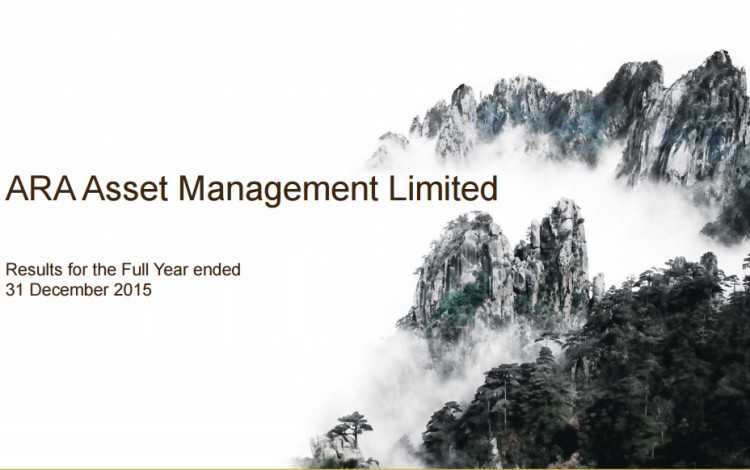
Here are 6 points to note for its FY15 results.
- Full year revenue dropped 10% from S$173 million in FY14 to S$156 million in FY15. However full year adjusted net profit increased 16%, from S$62 million to S$72 million. This was because of the 3% rise in management fees and the reduction in operating expenses. Adjusted net profit refers to “Net Profit excluding one-off adjustments” One-off items includes (i) gain/loss on fair valuation/disposal of financial assets; (ii) acquisition, divestment and performance fees; (iii) negative goodwill arising from acquisition of a subsidiary; (iv) impairment on available-for-sale financial assets; (v) gain/(loss) on disposal of investments and (vi) performance-based bonuses. As you can see, if we minus off one-off items, ARA’s FY15 “recurring” net profit actually increased by 16%!
- Cash flow from operations decreased by S$13 million for the quarter and S$79 million for the year. This was mainly due to ARA not selling the units they received as management fees. Notice that in FY14, ARA converted the management fee they received in units to S$82 million of proceeds but in FY15, they only converted S$16 million into proceeds. Why are they doing this? As explained in our previous post, they are building strategic stakes in these REITs to achieve alignment of interest with their REITs’ shareholders.
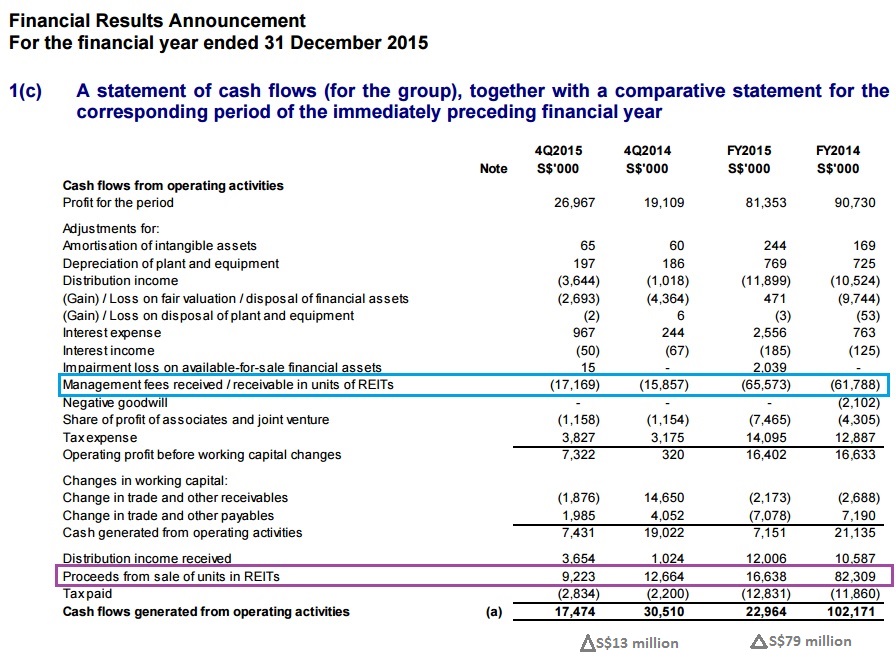
- Digging into details on their cash flows from financing, they had received a one-time boost of S$150.7 million from net proceeds from rights issuance. Immediately, they utilised S$123.5 million to repay loans. This was aligned to what was previously mentioned in their rights issuance, where they highlighted that they would use S$60 million of the proceeds to repay loans from Straits Trading Company (STC). Also to note, with only S$76 million of cash in bank, without the S$150 million boost from net proceeds, they wouldn’t be able to repay all the debt or be over S$74 million in the red. With the rights issuance, they have managed to lighten the debt and increased their cash and current ratio to 2.05 and 4.22. With a strengthened balance sheet, they are more prepared to capitalise on opportunities this weak economy.

- With regards to their current and non-current assets, it is interesting to note that they account financial assets in both their current and non-current segments. Looking at their footnotes (d) and (g) below, you realise that the financial assets are REIT units, and that the non-current financial assets are held as strategic stake. As fund managers, ARA receives most of their management fees in the form of REIT units. In the past, they sold the units off right away to convert their revenue in units to cash. Their footnotes give hints about which stakes are “more strategic” to them.
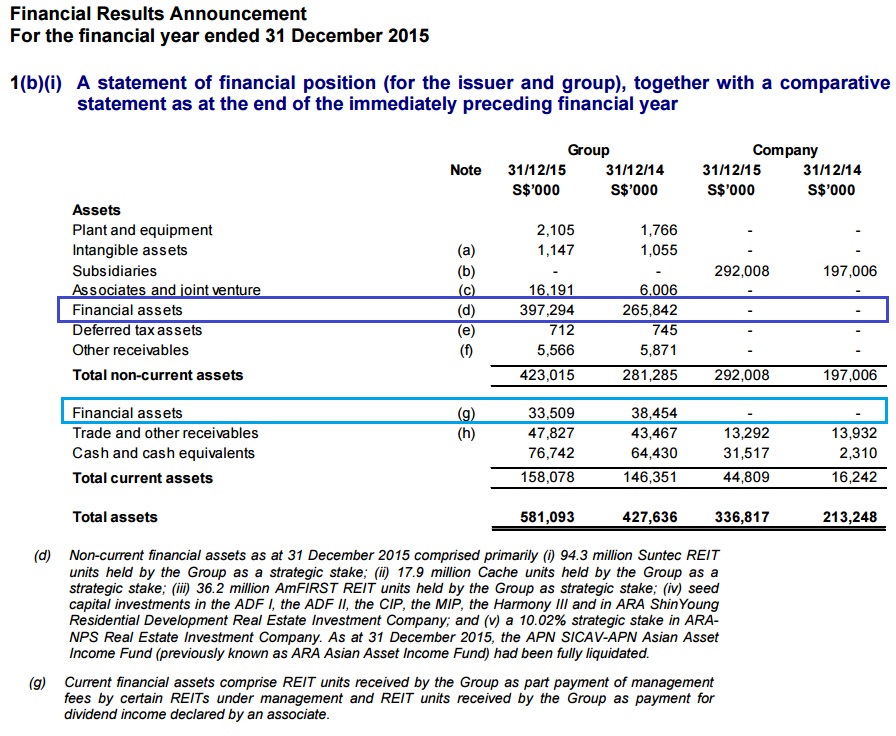
Source: Company’s report - In FY15, a number of acquisitions and divestment were announced by the respective REITs. In Nov 15, Suntec REIT had successfully acquired 3 floors of strata office space at Suntec Tower Two at a purchase consideration of S$101.6 million. Suntec also divested Park Mall for $411.8 million in conjunction with its 30% interest in the joint venture with SingHaiyi Group and Haiyi Holdings to develop Park Mall. Cache Logistics Trust acquired a total of 6 Australian properties worth approximately A$163.8 million. Cache also recycled their capital by divesting Kim Heng Warehouse for S$9.7 million at 9% premium over the original acquisition price. Fortune REIT divested Nob Hill Sqaure for HK$648 million at 2.9% yield. It also used some of its funds from the rights issuance to secure new capital and seed funding. However, Australia’s property had run up quite a bit due to capital inflow, a result of Singapore and China government’s property policies. At the same time, commercial property in Singapore might be facing some headwinds due to the upcoming CBD glut.
- With the flurry of activities in FY15, ARA’s Asset Under Management (AUM) increased 11.6% from S$26.7 billion in FY14 to S$29.8 billion in FY15. The S$3.1 billion increase in AUM was the biggest since Dec 11, more than 5 years ago where AUM jumped S$3.4 billion between Dec 10 to Dec 11. The average AUM growth in the past 3 years was around S$1.8 billion.
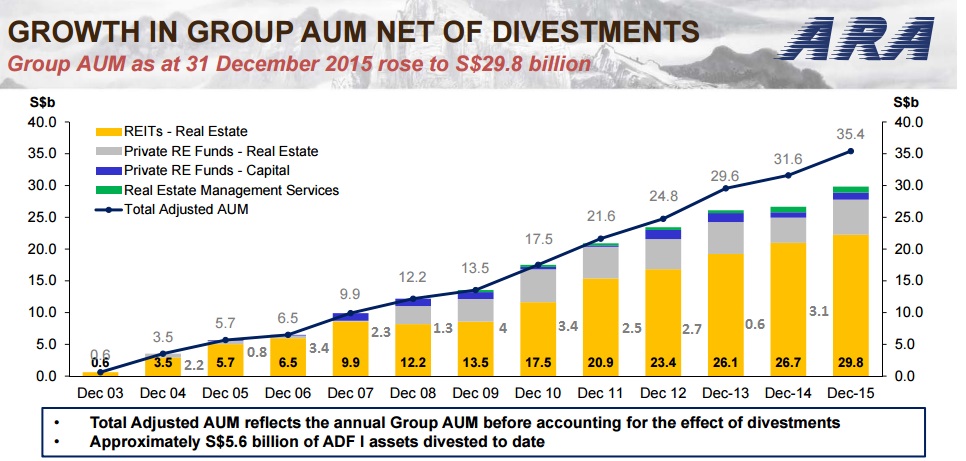
Conclusion
Currently ARA is priced 12 times its earnings and 2 times its book value. It is offering a 4.56% dividend yield. Its one year return has been -32%, dropping to S$1.06 from its 52 weeks high of S$1.755. It’s year to date return has been a staggering -8.5%. That is -8.5% in about 1 month!
The market is currently pricing in a series of bad news. From interest rates hike hitting REITs to the possible devaluation of the REITs managed by ARA and the commercial glut with the impending completion of Marina One, M+S, Guoco Tower, Frasers Tower, etc. potentially decreasing its management fees since they are pegged to a percentage of the AUM and rental income of the REIT.
As fundamental investors, we believe that stock prices are driven by sentiments in the short term, but in the long run, the stock price is driven fundamentally. We also know that stock prices move in extremes, swinging from extreme pessimism to insane exuberance. Coupling these two facts gives us very good opportunities to capitalise on sentiment driven extreme prices, although that is usually easier said than done. This is because what is firmly secure today could be toppled by tomorrow’s uncertainties.
Having said that, with aligned and integrity based management, a strengthened balance sheet, increasing “recurring” net profit and a potentially jittery market that the experienced management can capitalise on, we feel that ARA is well poised. We will continue to track ARA’s actions and results.
If you like our articles, do sign up for newsletters NOW!!
Note: Byte Sized Investments has vested stakes in ARA. John Lim’s last share repurchase was in Mar 13 at $1.60.
We have previously blogged on ARA. You can visit the post here.


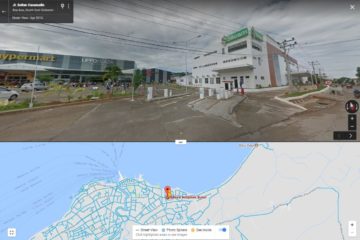

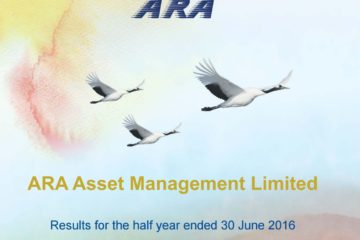
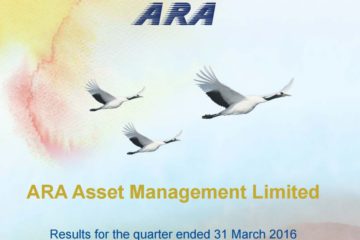
7 Comments
Very good analysis. Thank you for your kind sharing.
Dear Mr Cheong, thank you for your kind words. As we are investors ourselves, we do analysis on our investments. We thought why not share our analysis to our readers so that they benefit from our insights too.
Hi,Was looking at various reits like you. Reits exposed to indonesia is the hardest hit now, with lippo mall and first reit retreating about 30% from their peak. The fear is understandable as it will have a double whammy of interest rate hike and currency fall in the near future. But I find the fall excessive and in my opinion unjustified. Lippo has most of its loans in fixed interest, and is shield from interest rate hike, the earliest loan due in 2014, has effective interest of 4.29; interest rate should not shoot up much as with the earliest timeline, tapering should only start in september. How about currency fall? Currency has weaken about 10%. From 2012 AR, a hypothetical 10% strengthening in the exchange rate of the functional currency $ against the Indonesian Rupiah with all other variables held constant would have an (adverse) favourable effect on total return before tax of (2,680,000). Hardly a blow to Lippo distribution, but lets be conservative and super kiasu and assume a 10% fall in currency lead to a 10% fall in DPU, at 42cents, the yield is 7.6%. I have not account for the hedging. I have “impaired” earnings, so 7.5% seem like a worst case scenario yield for the next 2 years at least.Of course, if you believe Indonesia will experience a currency crisis like the AFC, then no price is cheap. btw, AK, I have send you an email on friday, but have not heard of you since, did you receive it??
Hi, thanks for your detailed analysis. Just a quick feedback that your link for the following is broken. I get the error saying i have no access to Drafts.
We have previously blogged on ARA. You can visit the post here.
Dear DMT, thank you for highlighting on the error. Thousand apologies for the inconvenience caused. We have repaired the link already.
Nice analysis.
You wrote that they are retaining the Reit units received as management fees (instead of selling it). Did the management indicate if they are going to continue doing so and until when? Or will they resume selling the reits units they they received as management fees?
Asking because it affects operating cash flow (and indirectly free cash flow) going forward.
Thks
Dear Jim,
Thank you for your kind words.
You have correctly pointed out the effects on its operating cashflow going forward. Management did not indicate whether they plan to continue doing so, or until when. They only shared that stakes in some of the REITs were for “strategic” reasons and for alignment of interest. We hope to obtain some insights during the next meet the management session.
We did offer another possibilities during our previous post (linked below), that they are guarding their interest from possible takeovers. We believe that ARA controls the REIT via their own shareholdings or through their partners (STC/CK). A REIT managed by ARA that is majority owned by any of its competitor could opt to replace ARA with another REIT manager of their choice. This would put ARA in a not-so-good position. As such we see this as a move against such possible takeovers.
With that thought, a majority stake could be a possible indicator for them to resume sales of REITs as proceed instead of holding them for strategic reasons.